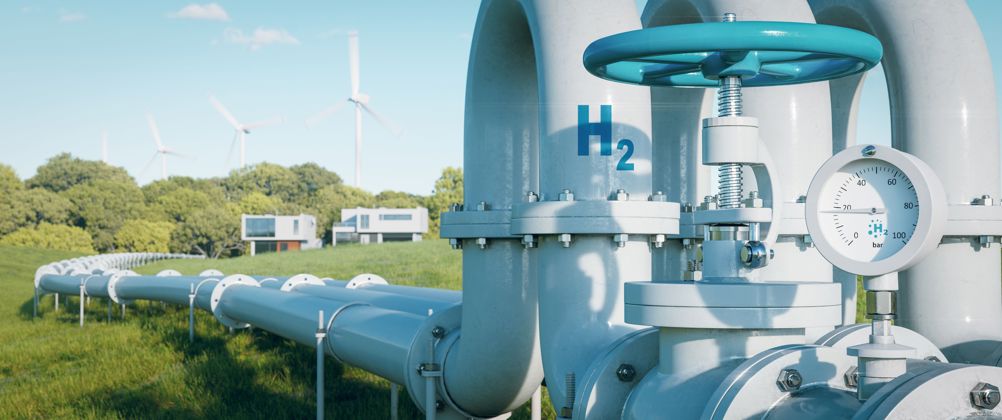The UK Government’s ‘Powering Up Britain’ strategy at the end of March announced the launch of the Net Zero Hydrogen Fund. As countries around the world advance similar schemes, it is reassuring to see a speedy transition to net-zero being prioritised on all levels. Now it’s a question of how to unlock low-carbon hydrogen’s potential as an energy source to achieve this revolution.
Hydrogen is widely used today as a process gas, from metal processing to chemical production and glass manufacture. However, hydrogen is set to take on an even greater role in a renewables-based future.
Hydrogen - green hydrogen in particular - has incredible potential as an energy source. For example, it has the ability to decarbonise sectors like heavy industry, heavy goods transport, aviation and shipping, which are difficult to electrify and hard to abate.
Related content
Building a large-scale hydrogen economy also plays a crucial role in driving economic growth on a local and national scale, creating additional jobs in supply and complementary sectors, and achieving engineering growth via a myriad of infrastructure projects. We see this especially with fuel cell manufacturers, who will then attract vehicle manufacturers and wider industries once the certainty of hydrogen supply in an area is guaranteed. In addition, given precarious global gas supplies, renewable hydrogen can be vital in diversifying the country’s energy supply and reducing UK dependence on fossil fuels.
Yet there are significant barriers to address and key changes required to accelerate the transition to a hydrogen economy. Currently, hydrogen production is stuck in something of a Catch-22: industry that could utilise hydrogen as an energy source is hesitant about investing in the conversion as currently large scale, reliable supply of low carbon hydrogen molecules isn’t readily available. At the same time, producers with capability to upscale supply are cautious about accelerating production of low carbon hydrogen as they are unsure of demand.
There is an urgent need to fix this cycle, as the demand for renewable energy in the near and medium-term future is going increase rapidly and significantly. In my role at Air Products, I have seen how advancing hydrogen projects can help break this cycle and bring forward economic and environmental growth.
Our three proposed hydrogen energy import terminals in Europe in Immingham, UK, Hamburg, Germany, and Rotterdam, The Netherlands, would be capable of producing renewable hydrogen in large, reliable quantities and thereby providing a secure baseload to the country. We would import solar and wind power stored in large quantities in the form of ammonia. Once imported, the ammonia would be used to locally produce green hydrogen which we’d then distribute to the end user. Hydrogen production based on imported renewable energy has the advantage of providing a reliable source of green hydrogen independent of domestic weather patterns and, if approved, these facilities would go some way in alleviating supply issues in the hydrogen market.

Pioneering hydrogen projects such as these will be relevant for decades to come and could attract a skilled workforce not only to the sector, but also to local areas and around the country, boosting the economy and at a larger scale, helping achieve national decarbonisation goals and increasing energy security.
In future, we’ll have the choice of many types of clean energy sources including locally produced renewables, imported renewables, green as well as blue hydrogen. With speed of the essence in order to avert the worst of the climate crisis, we should focus on deploying a combination of these solutions instead of discussing at great length which one might be the best one. They all have a role to play.
With climate change being such a clear and present concern, there is little time to get caught up in complexity that risk hydrogen projects floundering when they are needed most.
We have the expertise to move fast but like other manufacturers, we would benefit from secure and clear standards around hydrogen production that also significantly boost investment. Other industries, such as heavy goods vehicles and steel production would be assured of their investment both in terms of the resources they bring to bear and the jobs they create
As well as investments from manufacturers, we need to be assured that investment will also come from the top, a signal that the government is putting its faith and weight behind us. A subsidy to help bridge the gap between the cost of natural gas and the cost of clean hydrogen would greatly accelerate demand and further break the non-productive cycle. Much change is needed, but hydrogen energy has great potential to accelerate our journey towards a net-zero economy.

Caroline Stancell is Air Products General Manager of Hydrogen for Europe and Africa











Water Sector Talent Exodus Could Cripple The Sector
One possible reform to the Asset Management Plan (AMP) system would be to stagger the five year cycle across the ten or so water businesses, so that...